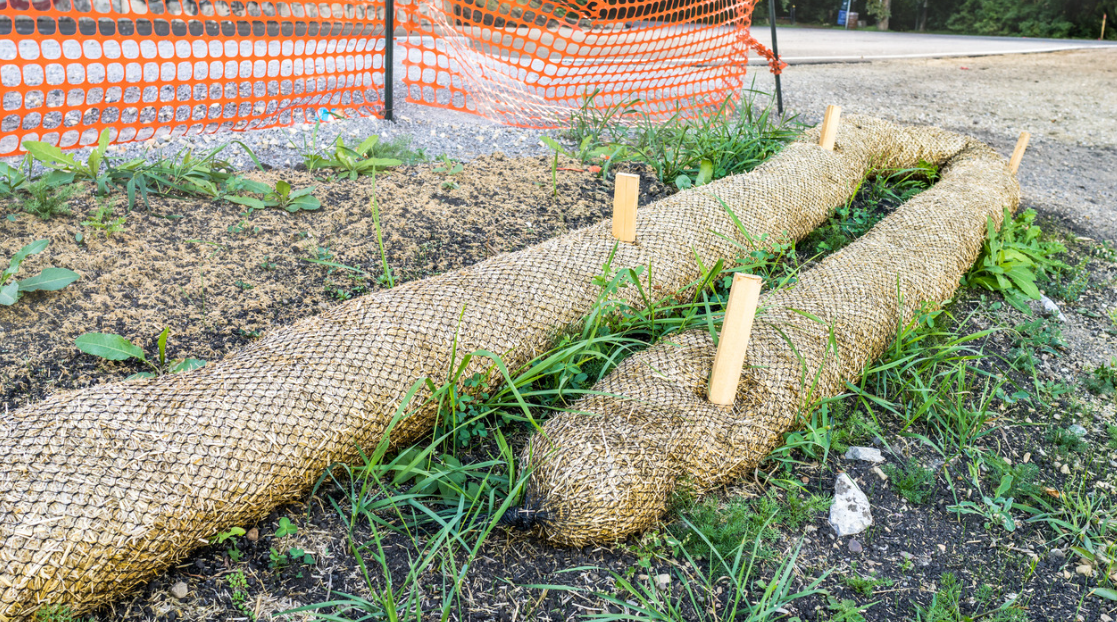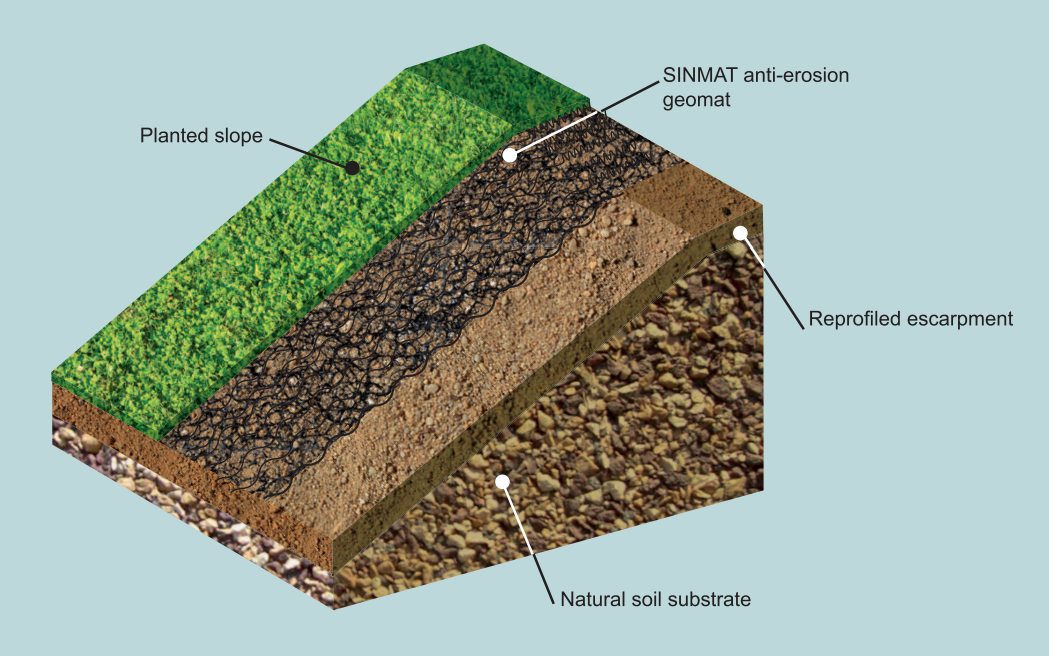Trusted Erosion Control: Memphis Erosion Control Solutions erosion control company
Wiki Article
Finest Practices for Erosion Control in Building And Construction Projects
Are you servicing a construction job and worried concerning erosion control? Look no additional! In this write-up, we will assist you via the best methods for avoiding erosion on your site. You'll find 5 essential techniques, effective sediment and drainage monitoring strategies, key considerations for slope stablizing, and tips for safeguarding plants and soil. We'll likewise dive right into the importance of implementing proper drain systems. Prepare yourself to take on disintegration head-on and ensure the success of your building and construction project.5 Vital Erosion Control Techniques

To successfully regulate disintegration on your building site, you'll need to apply crucial strategies such as incline stablizing and debris control measures. Incline stabilization is vital in avoiding dirt erosion on high inclines. You can accomplish this by utilizing approaches like terracing, which includes producing horizontal actions on the incline to decrease water flow and advertise the absorption of rainwater. One more reliable technique is the usage of disintegration control blankets or floor coverings, which are positioned on the slope and aid retain dirt fragments while allowing plants to expand. Sediment control actions are also crucial to avoid debris runoff right into neighboring water bodies. One effective technique is the installation of silt fences along the border of the building website. These fences function as barriers, catching sediment-laden water and permitting it to work out prior to it reaches the water bodies. In addition, you can utilize debris basins, which are short-lived retention ponds created to catch sediment and enable water to gradually drain off. Applying these important disintegration control techniques will assist decrease the unfavorable ecological impact of your construction job and make certain conformity with laws.
Efficient Sediment and Runoff Monitoring

You can efficiently handle debris and drainage in your construction project by executing appropriate erosion control steps. Debris and overflow administration is critical to avoid erosion and protect the surrounding environment. One effective measure is the installation of silt fencings along the border of the building and construction website. These fencings aid to have debris and stop it from getting in neighboring water bodies. An additional vital technique is the execution of disintegration control blankets or mats. These blankets provide a protective layer on bare soil, minimizing the effect of rainfall and stopping disintegration. In addition, using debris basins or debris catches can assist to record sediment and prevent it from entering stormwater systems. Routine maintenance of these measures is vital to ensure their performance throughout the building and construction job. This includes cleaning up and examining sediment containers and consistently changing silt fencings and disintegration control blankets as required. By carrying out these erosion control actions, you can successfully manage debris and overflow in your construction task, reducing the influence on the setting and adhering to governing demands.
Key Factors To Consider for Incline Stabilization
You need to very carefully take a look at the slope's characteristics, such as its composition, water drainage, and angle patterns. Look for indicators of disintegration, such as subjected roots, cracks, or down dirt.One more option is to plant vegetation on the incline, as the origins can help anchor the dirt and control erosion. In addition, setting up erosion control coverings or floor coverings can offer immediate protection while plants ends up being recognized.
It's essential to routinely monitor the maintained view website slopes to guarantee their effectiveness. Watch out for any indications of movement or erosion, and take prompt action if needed. Regular maintenance, such as examining and repairing any type of broken steps, is additionally necessary to ensure long-lasting security.
Best Practices for Plants and Dirt Protection
If essential,One effective method to shield greenery and dirt on slopes is by on a regular basis checking for indications of disintegration and taking immediate activity. By being observant and aggressive, you can avoid further damage and make certain the stability of the slope. Begin by inspecting the slope for any type of indicators of erosion, such as subjected roots, bare soil patches, or sediment build-up near the bottom. It is vital to resolve the concern without delay if you see any of these indicators. Implement disintegration control procedures such as setting up erosion control blankets, mulching, or perhaps constructing retaining wall surfaces if required. In addition, growing vegetation can considerably assist in stabilizing the soil. Pick indigenous plants that have deep origin systems, as they are much more effective in avoiding erosion. See to it to consistently examine the wellness of the plants and give essential upkeep, like watering and fertilizing. Bear in mind, disintegration can rapidly worsen and create serious damages, so it's essential to resolve it as quickly as possible. By taking aggressive steps and on a regular basis checking the slope, you can protect read this post here the plants and soil, ensuring the lasting stability of the location.Implementing Appropriate Drainage Solutions
To efficiently apply appropriate drain systems, it's crucial to consider the incline gradient and soil kind. When it concerns taking care of water circulation and protecting against erosion, recognizing these factors is important. The incline gradient plays a significant function in establishing how water crosses the land. Steeper slopes can cause faster water flow, boosting the threat of disintegration and flooding. On the various other hand, gentler inclines permit water to move more slowly, decreasing erosion capacity. By evaluating the slope gradient, you can develop an efficient drain system that fits the natural water motion.Dirt kind also influences drainage system design. Different dirt kinds have varying levels of permeability, affecting just how water is soaked up and drained pipes. For example, sandy soils tend to drain faster as a result of their crude appearance, while clay soils have a slower drainage price as a result of their small nature. Comprehending the dirt kind assists in picking ideal drainage techniques, lawn maintenance near me such as making use of absorptive products or installing French drains. Furthermore, thinking about the soil attributes helps protect against waterlogging, which can result in poor plant growth and damages to structures.
Final Thought
In verdict, when it comes to disintegration control in construction projects, you need to adhere to these best methods. Think about incline stablizing methods to guarantee the stability of the site. By complying with these necessary methods, you can successfully control erosion and guarantee the success of your building and construction job.To effectively control erosion on your construction website, you'll require to carry out vital methods such as slope stablizing and sediment control steps. Slope stablizing is important in avoiding soil disintegration on steep inclines. One more effective strategy is the use of erosion control coverings or mats, which are positioned on the incline and help preserve dirt particles while allowing plants to grow. An additional choice is to plant plants on the slope, as the roots can assist anchor the dirt and control erosion. Implement disintegration control procedures such as mounting erosion control blankets, mulching, or also creating maintaining wall surfaces if needed.
Report this wiki page